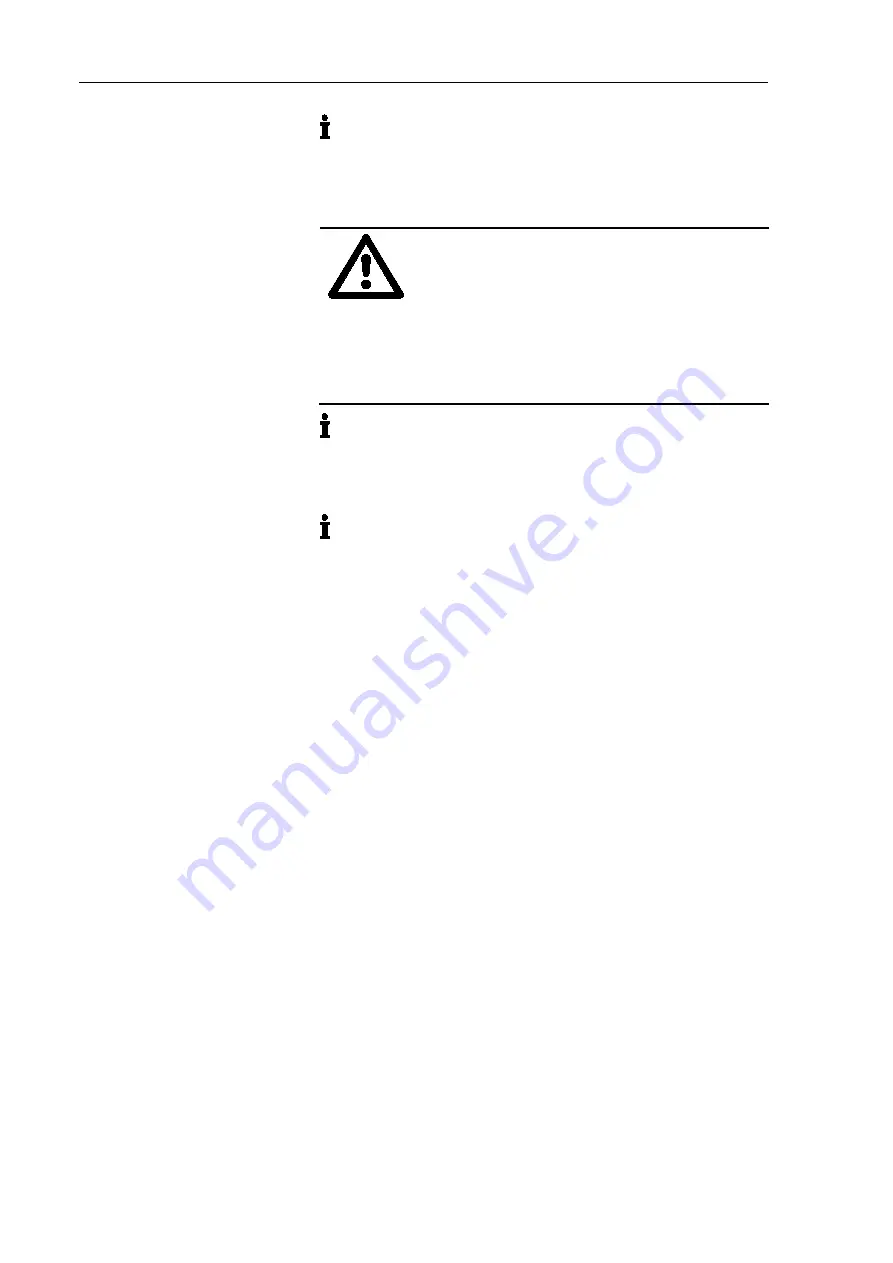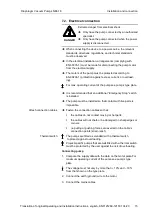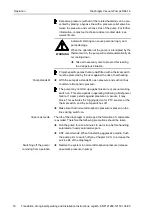
Operation
Diaphragm Vacuum Pumps N86.16
18
Translation of original Operating and Installation Instructions, english, KNF121260-121531 04/20
Excessive pressure (with all of the related hazards) can be pre-
vented by placing a bypass line with a pressure-relief valve be-
tween the pressure and suctions sides of the pump. For further
information, contact our technical adviser (contact data: see
www.knf.com).
WARNING
Automatic starting can cause personal injury and
pump damage
When the operation of the pump is interrupted by the
thermal switch, the pump will restart automatically af-
ter cooling down.
Take all necessary care to prevent this leading
to a dangerous situation.
Project-specific pumps that are
not
fitted with a thermal switch
must be protected by the user against the risk of overheating.
With the pump at a standstill, open pressure and suction lines
to normal atmospheric pressure.
The pump may not start up against pressure or vacuum during
switch-on. This also applies in operating following a brief power
failure. If a pump starts against pressure or vacuum, it may
block. This activates the trigging device for PTC sensors or the
thermal switch, and the pump switches off.
Make sure that normal atmospheric pressure is present in the
lines during switch-on.
The life of the diaphragm is prolonged the formation of condensate
is avoided. Therefore the following precautions should be taken:
Run the pump for a few minutes to warm it up before handling
saturated or nearly saturated vapors.
KNF recommends: When transferring aggressive media, flush
the pump prior to switch off (see Chapter 9.2.1) to increase the
service life of the diaphragm.
Restore the system to normal atmospheric pressure (release
pneumatic pressure in pump).
Pump standstill
Vapors as media
Switching off the pump /
removing from operation











































